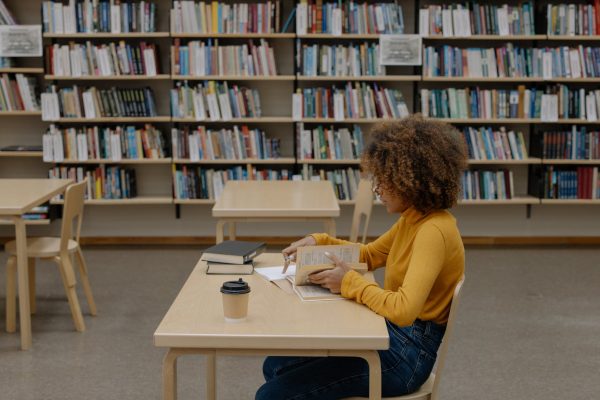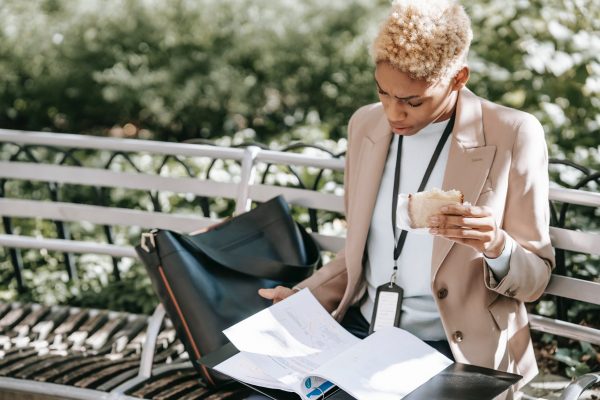How can a student read and understand?
Lots of students around the world struggle to read and understand.
Little wonder one of the FAQs I get on our platform and YouTube channel is “how can a student read and understand”?
Imagine this scenario. You pick a book, open the first page and start to read.
By the time you get to the end of the page, you simply can’t remember what you’ve been reading in just a few minutes!
You don’t have to imagine that scenario, it’s something that happens to many students these days for whatever reasons.
Now, let me take you through tested practices on how a student can read and understand faster.
How can a student read and understand?
-
Table of Contents
Start with the end in mind
Before setting out to read any material, ask yourself this simple question, “why do I want to read this book”?
Do I simply want to entertain myself; while away time, keep up with industry news, learn some new ideas, or find answers to some very important questions?
When you have a clearly stated purpose for your reading task, then, it becomes easier for you to focus on that purpose as you read.
For example, reading material to answer a comprehension passage requires more attention than reading a literary work just to expand your vocabulary.
One is more fun and relaxing than the other.
So, from the onset, have in mind what you want to make out of your time reading and align your reading to achieve it.
-
Avoid distractions
“We all multitask in today’s world, but you have to be careful…when students are trying to learn new concepts, new information, distractions are bad and they can impair the ability to learn.” – Michael Hortsch, Ph.D. – University of Michigan Medical School.
Talking about distractions, there have never been more distractions for students than there are now.
From social media to addictive mobile apps, endless streaming services, YouTube, and all you have, it’s a struggle to stay focus these days.
Once it’s time for you to read, be sure to eliminate all sorts of distractions around you.
Avoid noisy and busy settings that can easily make you lose focus on the task at hand – reading.
Turn off your internet, phone notifications and if possible, put your cell phones on silence mode.
An intended quick glimpse at your phone for a second could leave you spending up to hours on social media before you know what’s happening.
I will even recommend you keep your phone far off when reading so you are not tempted to pick your phone at the sight of it.
Avoiding all distractions while reading is one of the important steps on how a student can read and understand.
How can I read and understand without cramming?
-
Do a preview of the material
Once you’ve ticked on the two boxes above, the next step you’ll need to take to improve your reading skill is to quickly skimp through your reading material
Similar to viewing the thriller of a movie, when you preview your text, you’ll get the overall context of the book and know exactly what to look forward to in your full reading.
Previewing a reading material before actual reading prepares you to gain an understanding of what you’re about to read, and fast too.
How can you preview a text?
Scan through from the table of contents to the end. Take a look at the headings, subheadings, subtitles, bullet points therein.
Look through the preface or introduction, and concluding paragraphs, images, and other features in the text or book.
I discovered that a lot of students would most likely skip through the introductory part of a book and head straight to the body.
By doing this, you would be missing out on some important information that would further aid your understanding of a book, so don’t skip this introductory part.
-
Practice selective reading
One of the easiest ways a student can read and understand is to practice selective reading.
Select a section or a part of a book that you need most from the larger chunk when reading.
Who says you have to read every section of a textbook or an article?
If you are reading a voluminous material, you may want to focus on the section that is most relevant to your need at the moment.
It’s better to read a few pages or paragraphs and get a good grasp of it and digest the main points than cover dozens of pages that you can’t remember.
During a test or when you are reading for examination, you may want to concentrate on parts your examiner would likely dwell on.
Don’t get me wrong, I’m not by any chance encouraging laziness.
It will benefit you greatly to read all parts of a textbook but when reading to understand, you need to concentrate on certain areas than others.
-
Break complex long reading into smaller parts
I personally enjoy my reading when I break long and complex materials into smaller pieces, otherwise, it would be an unnecessarily painful and unenjoyable read.
Breaking your reading material into shorter segments helps you to retain more of the information and builds your confidence in understanding a complex subject.
If need be, you’ll be able to explain to the class the concept you’ve read in your own words and that will help you better grasp the material.
How can a student read and understand
-
Engage with the material
Reading should be an active, not a passive activity so, as you read, engage in the reading material.
Look up unfamiliar words, concepts, dates, and further information about important ideas in the book or reading material.
As you actively engage with your reading, you would not only tend to remember what you read for a longer time, but you would get a larger picture of the ideas on the material and boost your understanding.
So, as you read, place your dictionary close to you and if possible, lookup Google for more detailed information.
Make sure you are very brief about this so you don’t get distracted from the original material that you are reading.
-
Create mental images
Creating mental images of scenarios in a text that you are reading would aid a better understanding of your material.
A student can read and understand better by practicing the mental images building technique.
Learn how to form pictures in your mind of events in your books, literary works, articles, or texts as you read them.
This technique most naturally occurs when reading literary works that tap into your imagination. However, you can apply this technique to other materials you read.
What could help you is to spot important headlines, sub-heading, or important sentences or paragraphs that you have noted, stop for a while, and think of the associated mental images.
Then get yourself into the very center of the scene. Yes, create a mental image and scenario as you read.
As you create these images, it’s almost like you are part of the plot. Your mind is busy thinking of possibilities or likely outcomes which in turn boosts your engagement with the material.
-
Take notes
This is a no-brainer. If you are asking, “how can a student read and understand?” one thing you should be doing is taking notes of crucial points as you come across them.
So, get active. Get a pencil or highlighter as you read so as to sketch important points you would love to remember.
Make use of the margin of your book. Write questions in the margin, underline things you find interesting, important concepts or ideas, and information that you’ll love to remember.
Don’t hesitate to make lots of marks on your text as you read.
That way, you get something to do while reading, it’s not all passive.
Some students get caught in the habit of highlighting just too many random paragraphs or passages.
This would be at your disadvantage when you go back to read through what you’ve highlighted.
You would almost be reading all the passages over again because you’ve highlighted just too many passages randomly.
-
Take breaks in-between
Take breaks.
This boils down to timing and sticking to your schedule on your path.
If you schedule and save enough time to do your reading, you will be able to complete it comfortably while taking adequate breaks in between.
Those much-needed breaks will not cut into your reading time if you allocate enough time to read the material.
I’ll suggest you take breaks every 45 minutes of reading to let yourself relax for 15 minutes or so.
During the short break, engage in some other kind of activities entirely different from reading.
This will give your mind some rest while you focus on other things for a while.
When you’re ready, you’ll be refreshed, energized, and excited to get back to your reading.
Every student who wants to read and understand must learn to take breaks in between readings.
How can I read and understand without forgetting?
10. Read material twice
While it’s not a good habit to stay fixated on a particular word or paraphrase and constantly go back to re-read sentences that you don’t fully understand, reading your material more than once is a great way to boost understanding.
While reading, if there are some sentences or phrases you don’t quite understand, you don’t have to keep re-reading the same sentence over and over just to perfectly understand it.
This will waste a lot of your time. So, leave those sentences and keep reading.
Don’t worry, by the time you are reading the material the second or third time, you will come to understand the entire concept or ideas therein.
-
Read Phrases. Don’t read words
An equally challenging skill to learn is how to take in phrases or chunks of text at a time, and not reading individual words.
Your eye span is 1.5 inches long. What that means is that you can read up to nine words at a time. Yes, that’s exactly so!
Looking at four or five words at a goal will help you to take in more at once.
To get a grasp of this, it will take lots of practice and time as with everything else.
-
Summarize and reflect
Once you finish reading each section or portion of the material, don’t just proceed to the next. This would be a perfect time for you to do a brief summary of what you’ve been reading.
A summary is a brief statement or account of the main points of what you read.
Keep your summary short and simple and full of meaningful points.
At the end of each page, section, or chapter– depending on the size of the material-, write a brief summary of what happened on that page.
That’ll break up the reading and allow you to go through it with much more careful attention
-
Read more
None of the practices and suggestions I share with you here is as effective as developing the habit of reading daily.
Even if you learn how to create mental images or how to take notes and read phrases but read just once in two weeks, you would hardly see any good results.
But by simply making it a habit to read a lot more, your reading skill undoubtedly improves and you will be able to read and understand more by the day.
As with all worthy pursuits, reading is a skill that takes time to develop. The more you do it, the better you will become.
ROUNDING UP
As always, if there is anything I didn’t touch on in this post, feel free to let me know in the comment session.
Also, let me know if there is anything you want me to talk about in the blog or my YouTube channel.
Follow us on Twitter and Instagram. Subscribe to my YouTube channel and don’t miss out on our awesome content there.
CHEERS!
Do you want to make money right from your campus and start building a successful life from school?
Bukola Owo-Bello is a spirited storyteller, content creator and YouTuber who loves sharing amazing opportunities, inspiration, and ideas with forward-thinking African youths.
Follow her on YouTube, TikTok and Instagram on @BukkiTalks










Nice one